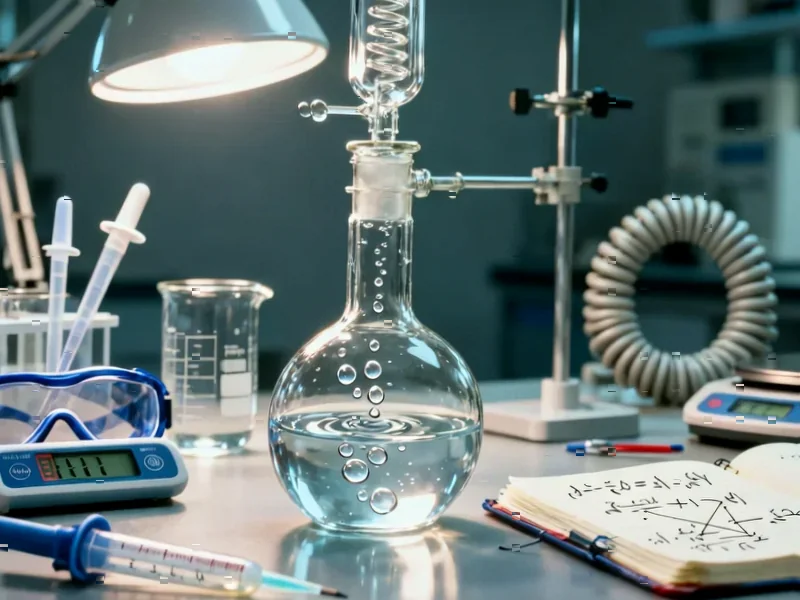According to Phys.org, researchers at the Max Planck Institute for Terrestrial Microbiology in Marburg, led by Johannes Rebelein, have successfully purified and characterized the methylthio-alkane reductase enzyme from Rhodospirillum rubrum bacteria. This enzyme produces ethylene under oxygen-free conditions without releasing CO₂, using complex iron-sulfur clusters previously thought to exist only in nitrogenases. Doctoral student Ana Lago-Maciel, the study’s first author, confirmed these “great clusters of biology” drive the reaction, marking the first discovery of such clusters in a non-nitrogenase enzyme. The research reveals the enzyme’s versatility in producing hydrocarbons including ethylene, ethane, and methane, potentially providing a sustainable alternative to fossil fuel-based plastic production. This breakthrough opens new possibilities for understanding how metal cluster reactivity is determined by protein scaffolds.
The Ancient Chemistry Connection
What makes this discovery particularly significant is the evolutionary connection to nitrogenases, some of Earth’s oldest enzymes that emerged billions of years ago. Nitrogenases contain complex iron-sulfur clusters that enable them to convert atmospheric nitrogen into biologically usable forms, a process fundamental to life itself. The fact that methylthio-alkane reductase shares these structural features suggests these metal clusters were performing reductive catalysis long before nitrogenases evolved. This represents a paradigm shift in our understanding of early Earth chemistry and hydrocarbon formation. The enzyme essentially repurposes ancient biochemical machinery for modern industrial applications, creating a bridge between geochemical processes and contemporary manufacturing needs.
The Scale-Up Challenge
While the laboratory discovery is scientifically exciting, the path to industrial implementation faces substantial hurdles. Bacterial enzyme systems typically operate at ambient temperatures and pressures with exquisite specificity, but they’re notoriously difficult to scale for industrial production. The oxygen sensitivity of these metalloenzymes presents a major engineering challenge—maintaining oxygen-free conditions in large-scale bioreactors is both technically demanding and expensive. Additionally, enzyme stability under industrial conditions remains questionable. Most industrial processes require catalysts that can withstand elevated temperatures, varying pH levels, and continuous operation for extended periods. Bacterial enzymes rarely meet these robustness requirements without extensive protein engineering, which could take years of additional research.
Economic Realities and Market Timing
The economic viability of enzyme-based ethylene production faces stiff competition from established petrochemical processes. Current ethylene production from fossil fuels benefits from decades of optimization and massive infrastructure investment. Even with environmental advantages, bio-based alternatives must compete on cost to achieve market penetration. The enzyme purification process described in the research is likely expensive and resource-intensive, raising questions about whether it can be economically scaled. Furthermore, the transition to renewable plastics requires not just new production methods but also changes in downstream processing, distribution, and recycling infrastructure. These systemic challenges mean that even with perfect technology, market adoption could take decades without strong policy support and industry collaboration.
Environmental Tradeoffs and Lifecycle Considerations
The zero-CO₂ emission claim during ethylene production represents only part of the environmental picture. While the enzymatic reaction itself may not produce carbon dioxide, the broader lifecycle impacts must be considered. Growing the bacterial cultures requires energy and nutrients, and the purification process likely involves chemical solvents and significant energy inputs. Additionally, the environmental impact of large-scale bacterial cultivation—including water usage, nutrient sourcing, and waste management—could offset some of the carbon benefits. A comprehensive lifecycle assessment would be necessary to validate the net environmental advantage over conventional methods. The research represents an important step toward sustainability, but claiming it as a complete solution would be premature without addressing these broader ecological considerations.
Broader Research Implications
Beyond plastic production, this discovery opens new avenues for understanding metalloenzyme evolution and function. The structural insights gained from studying methylthio-alkane reductase could inform the design of synthetic catalysts for various industrial applications. Researchers might leverage this knowledge to engineer enzymes for producing other valuable chemicals beyond ethylene, potentially creating a platform for multiple bio-based manufacturing processes. The finding that iron-sulfur clusters can function outside nitrogenases suggests nature may have more examples of these “great clusters” performing unexpected chemistry. This could inspire new approaches to catalyst design across multiple industries, from pharmaceuticals to energy storage, by borrowing principles from these ancient biological systems.




